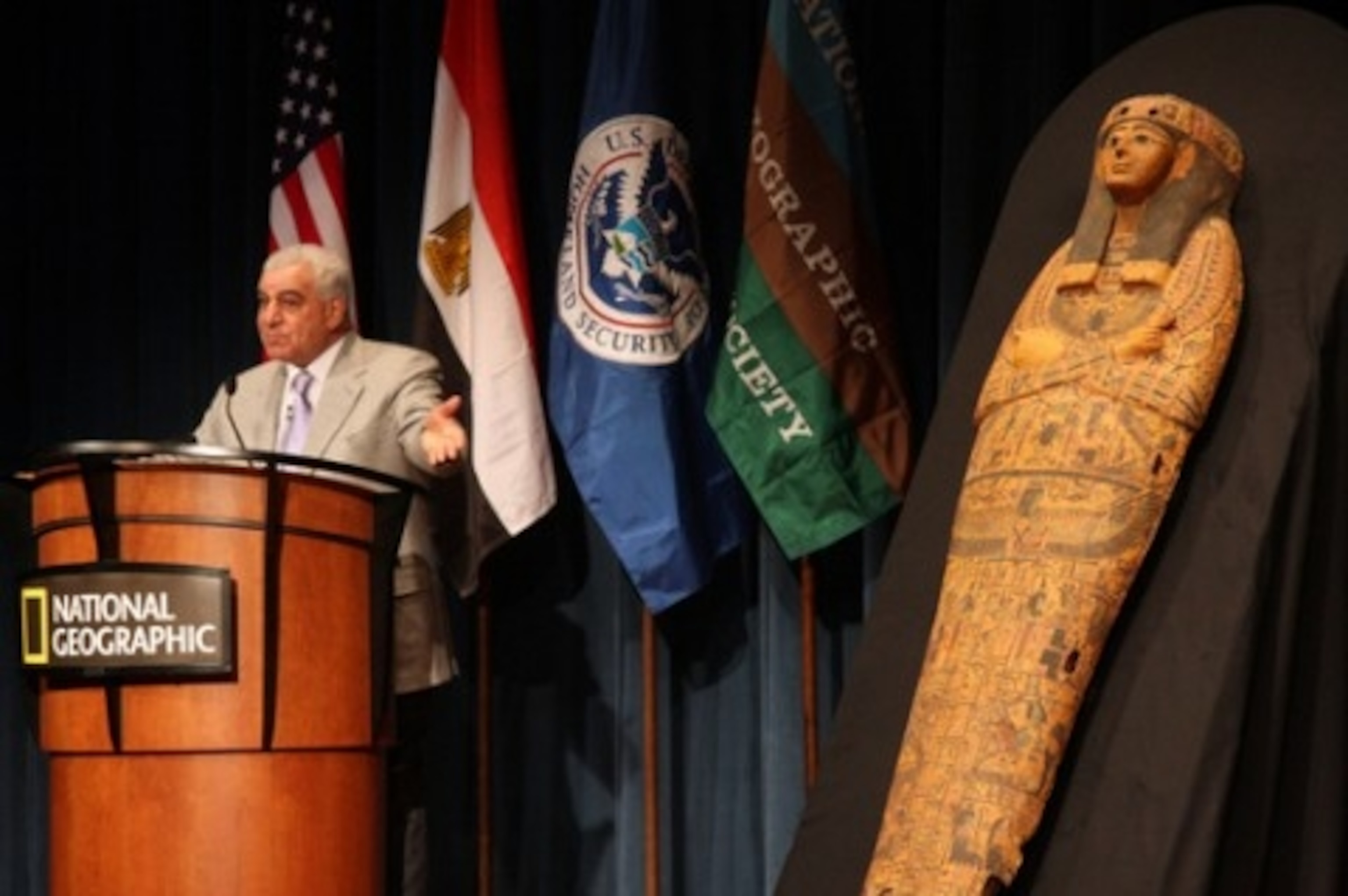
Stolen Sarcophagus Returned to Egypt
It began at a standard checkpoint, when agricultural specialist Herbert Kercados with the U.S. Immigration and Customs Enforcement (ICE) stopped to inspect a crate at Miami International Airport that had been shipped from an art gallery in Spain. Inside the crate was an Egyptian sarcophagus, supposedly being brought to a collector–legally–in Canada. But the inspector’s sixth sense went off, and he had the inkling that something wasn’t legitimate about the deal. It turns out that he was right.
This morning at the National Geographic Society headquarters, Executive Vice President of Missions Terry Garcia stood in front of the sarcophagus and detailed the twisted tale of its arrival in the States. Teams from ICE and the U.S. Customs and Border Protection collaborated to track down the false paperwork and black market dealings that led the artifact to end up in the “silent world of illegal antiquities trade,” Garcia said. Egypt had never authorized the export of the sarcophagus, he explained, and every item stolen is a “lost piece of history that could be a key to secrets of the past.”
The 3,000-year-old sarcophagus, identified as being from the period of the 21st Dynasty near the end of Golden Age of Egypt, is a stunning work made from balsa wood covered in still-colorful hieroglyphics. It “may be the most beautiful piece of all the 31,000 antiquities that have been repatriated to Egypt in the past eight years,” said Zahi Hawass, who was on hand to accept the coffin on behalf of the government of Egypt. Hawass, an Egyptologist and Explorer-in-Residence with National Geographic who also serves as the Secretary General of the Egyptian Supreme Council of Antiquities, said that the best part of his job was not the discovery of artifacts, but being able to return them to Egypt. “These pieces,” he said, “are the heritage of human beings all over the world.”
The sarcophagus, upon its return to Egypt, will be the centerpiece of a new exhibit opening at the Cairo Museum on April 7th, that will feature other repatriated treasures. The exhibit’s opening will also take place in conjunction with a conference that will gather together 30 countries whose artifacts have been stolen, and Hawass said he hopes that each country will bring a “wish list” of items that they’d especially like to have returned. On his own wish list is the bust of Nefertiti, now on display at the Neues Museum in Berlin, and the Rosetta Stone, which has been at the British Museum in London since 1802.
Hawass said that Egypt has been working to enhance screening at its 32 ports and airports and they’ve begun recording and documenting all of their monuments. They’ve even made attempts to copyright the Pyramids.
“We do not have a record of how many or how much has been stolen,”
- National Geographic Expeditions
Hawass said. “The country that has helped the most to return artifacts to Egypt has been the United States.”
Read More: U.S. law enforcement has also working to halt the international trade in endangered animals, as revealed in this article by Bryan Christy in the January issue of National Geographic.
Photo: Zahi Hawass discusses the return of the stolen sarcophagus; by Megan Seldon
